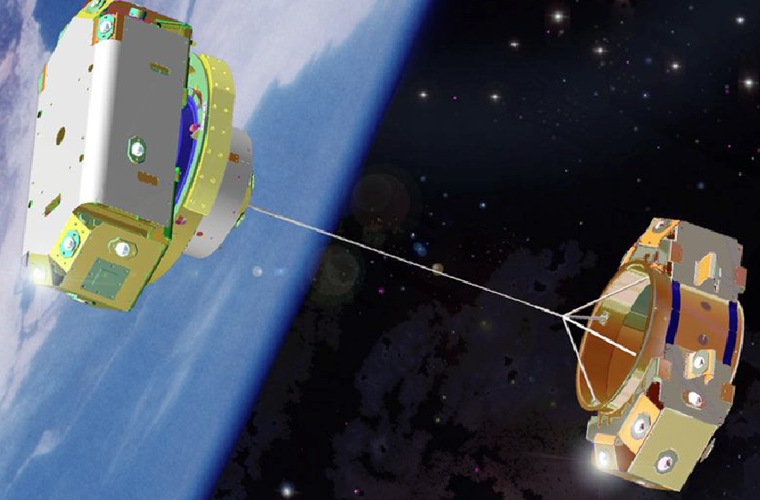‘Space tethers’ can be used to fling spacecraft into interplanetary space
The tether could be used to deorbit out-of-use spacecraft, push spacecraft from low Earth orbit into higher orbits, or even push spacecraft out of Earth’s orbit altogether.

 Enlarge
Enlarge
NASA is researching technology that would push and pull satellites around in space using nothing more than a long cable.
If your mind went immediately to space elevators, let me quickly kill that idea: Space tethers are sort of related, but wouldn’t actually tether a cable from space all the way to the ground. (The cord would probably be made of graphene or some sort of carbon fiber; what to make the cable out of is the biggest technological holdup to space elevators.)
Instead, the administration is suggesting that electromagnetic tethers on already-orbiting or space bound satellites could be used to move a spacecraft in space without any propellant whatsoever.
“Space tether assist is the concept of using a rotating tether anchored in space, which can be used to catch upper stages or payloads and impart orbital momentum to elevate them to orbit,” NASA wrote in its “Technology Roadmap,” a series of papers in which the agency discusses emerging technology and their feasibility. The purpose of the roadmap is to inspire contractors, researchers, and companies to apply for NASA grants, prize money, and contracts to actually develop the tech.
At first, the tethers won’t actually be able to connect to anything. Instead, it’s a conductive wire that, using the Earth’s magnetic field, automatically generates energy thanks to its orbital velocity. That energy can then be used to push the spacecraft around. It looks something like the image on this page.
A joint paper between NASA, the Smithsonian Astrophysical Observatory, and [Prof. Brian Gilchrist at the] University of Michigan detailed how it would work. Essentially, electromagnetic current would flow from one end of the tether to the other and would be used to transfer energy from the tether to the spacecraft, which could then go up or down.
“Propulsion is accomplished by converting the magnetic force on the tether current into propulsive or drag thrust to either increase or decrease the orbital energy of the spacecraft system,” the researchers wrote.
The tether could then be used to deorbit out-of-use spacecraft, push spacecraft from low Earth orbit into higher orbits, or even push spacecraft out of Earth’s orbit altogether.
“Electrodynamic tethers provide very high delta-V for small robotic spacecraft in LEO and any planet with a magnetosphere to allow altitude and inclination change, end-of-life disposal, and nearly-indefinite station keeping without the use of propellant,” NASA wrote in its roadmap.
If this doesn’t excite you (still expecting space elevators, eh?), consider that NASA always wants work to be done on momentum exchange tethers, which could serve as something of a gas station in space. Except, instead of gas, 60-mile-long tethers would just be used to transfer energy from one spacecraft to another, allowing one satellite to start launching others from Earth’s orbit into interplanetary space.
“Momentum exchange tethers provide reusable, high-thrust to interplanetary or LEO-to-geosynchronous orbit transportation,” NASA wrote.
Many of the technologies described in the roadmap are many years off—there are mentions of antimatter propulsion systems and the like. But NASA said that the technology to create and use these tethers is already quite advanced. Over the last decade or so, NASA has experimented with sending currents along short tethers, so the technology seems sound.
NASA noted that there “is no existing tether propulsion capability,” but said that it suspects a basic tether that deorbits or changes the orbit of a satellite already in space could be built within two years. In fact, there is already a company working on this technology, called Tethers Unlimited. More advanced, energy-transferring ones that may be able to provide a bit of extra push to put satellites from the Earth’s atmosphere into space or could push satellites out of Earth’s orbit altogether could be ready early next decade (assuming the work is actually taken up by scientists at the agency).

 MENU
MENU 
